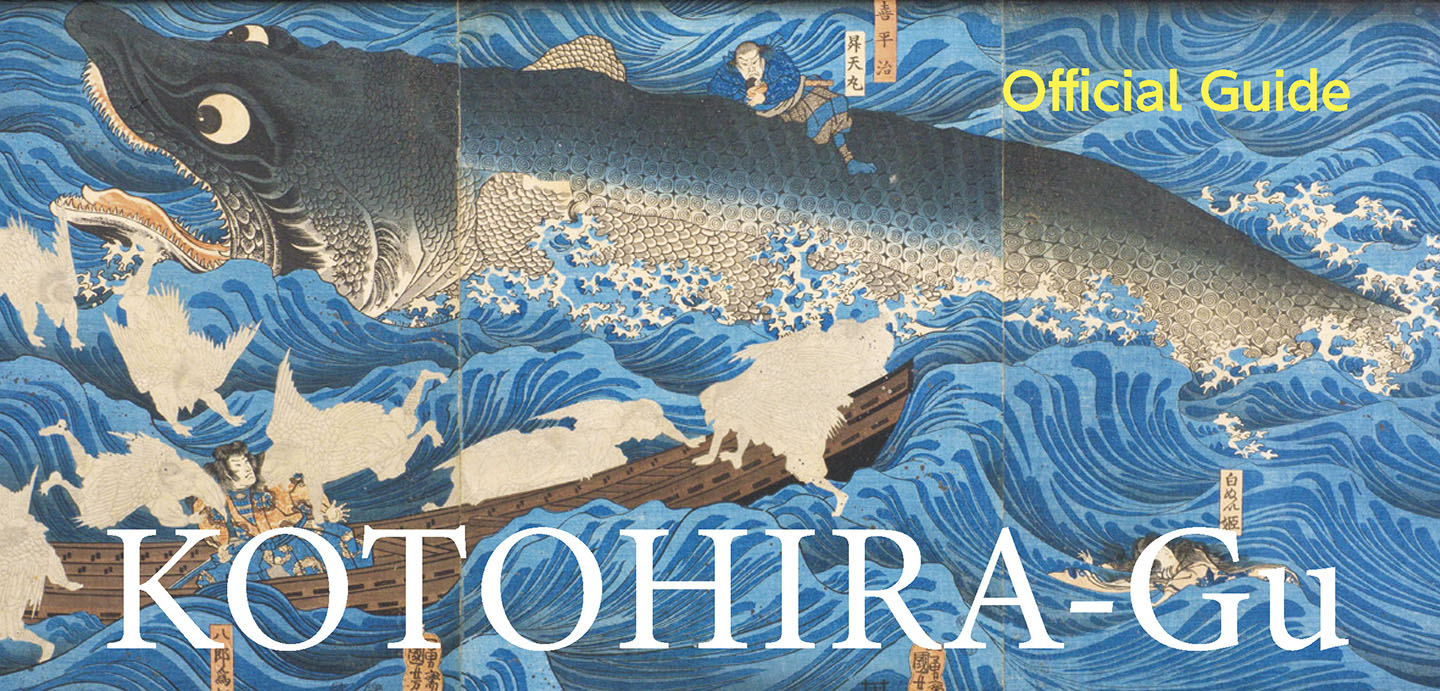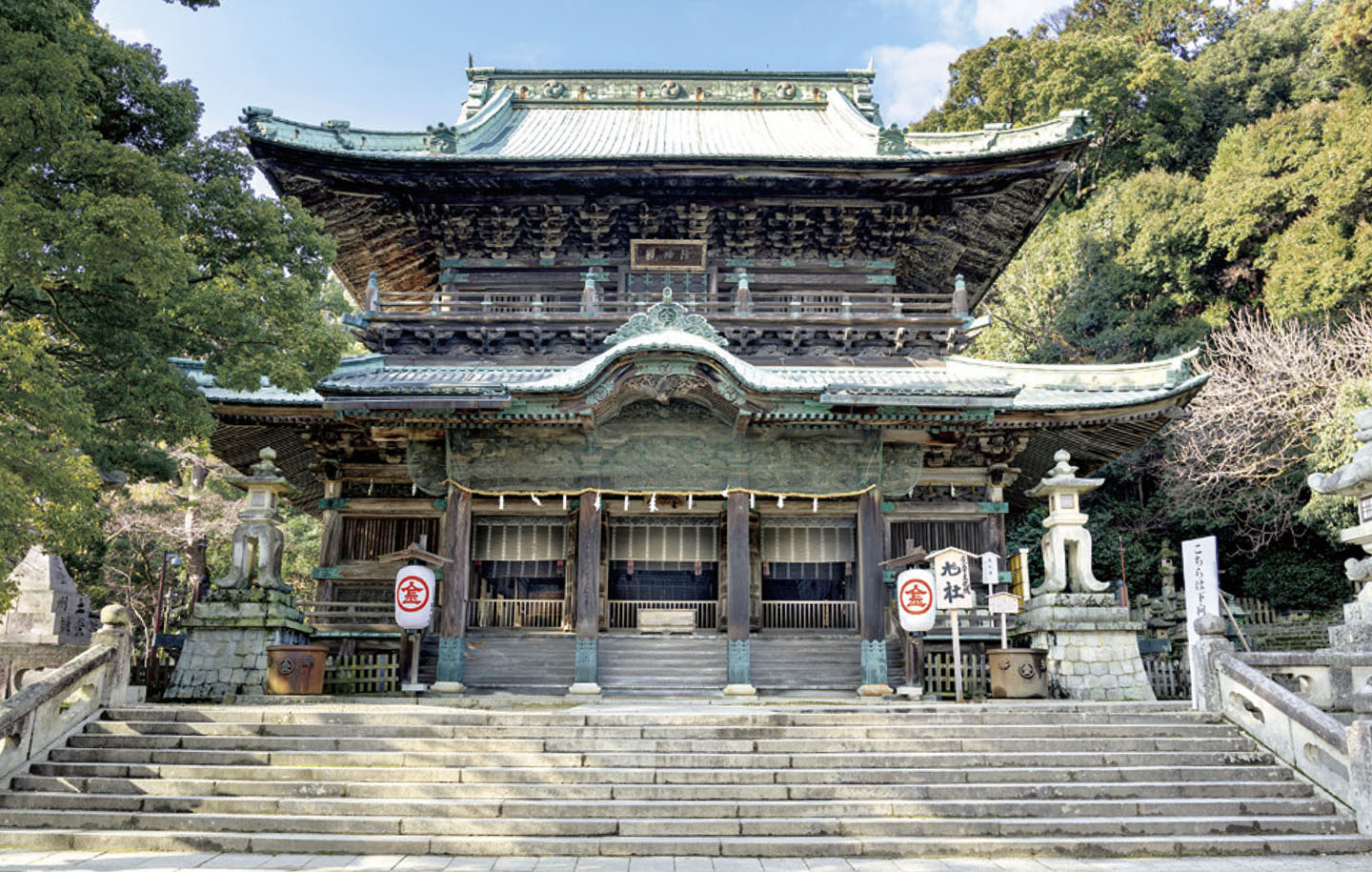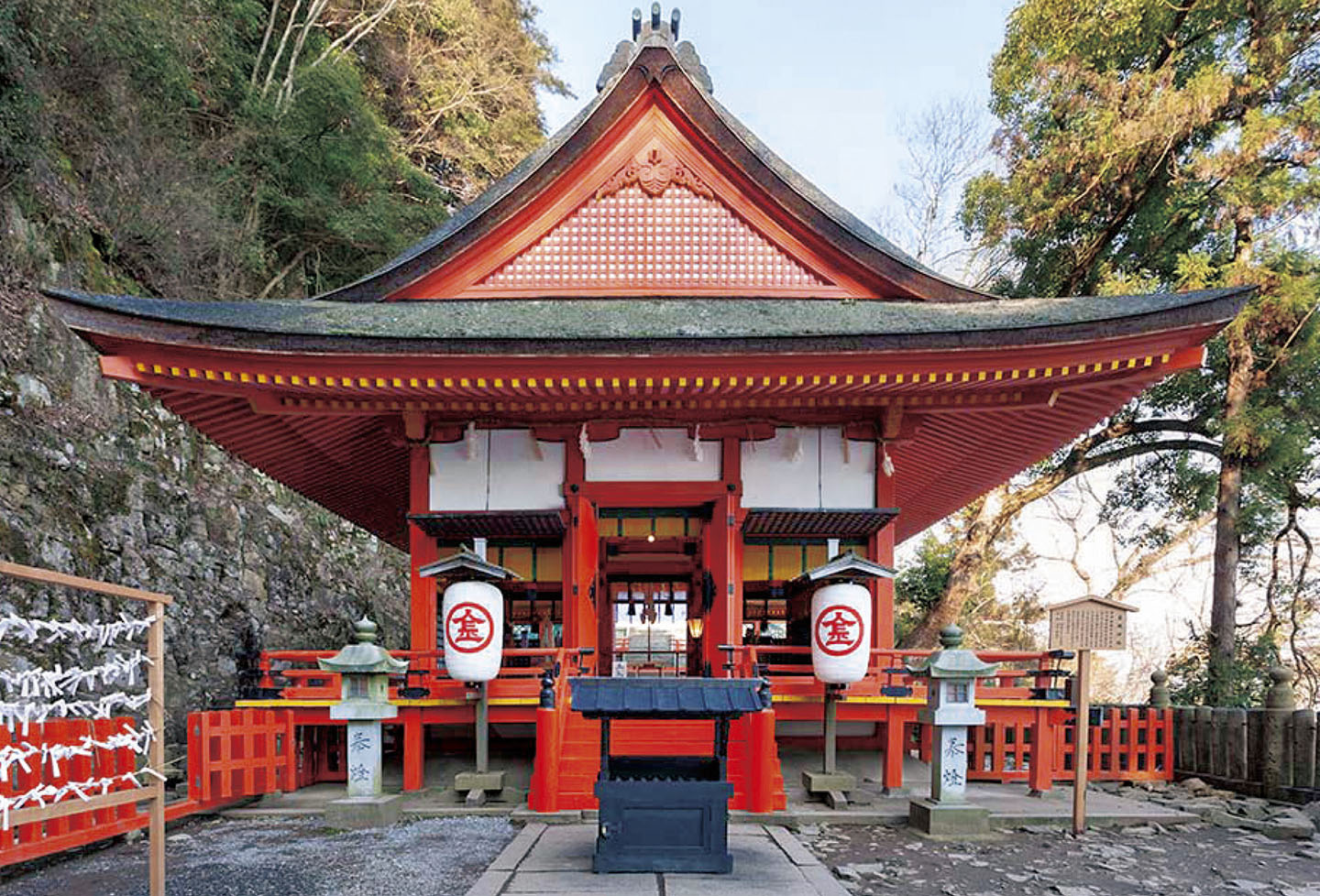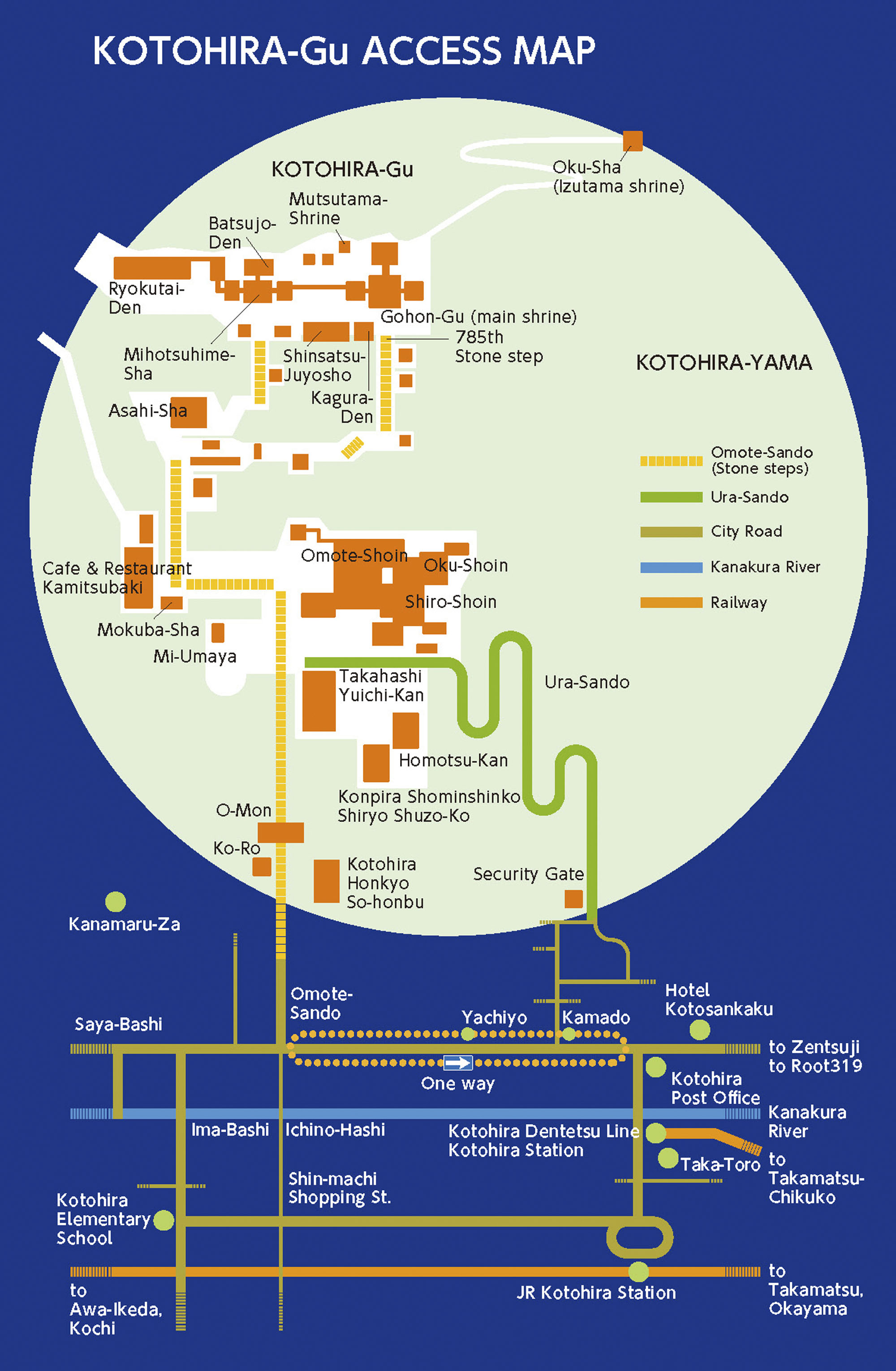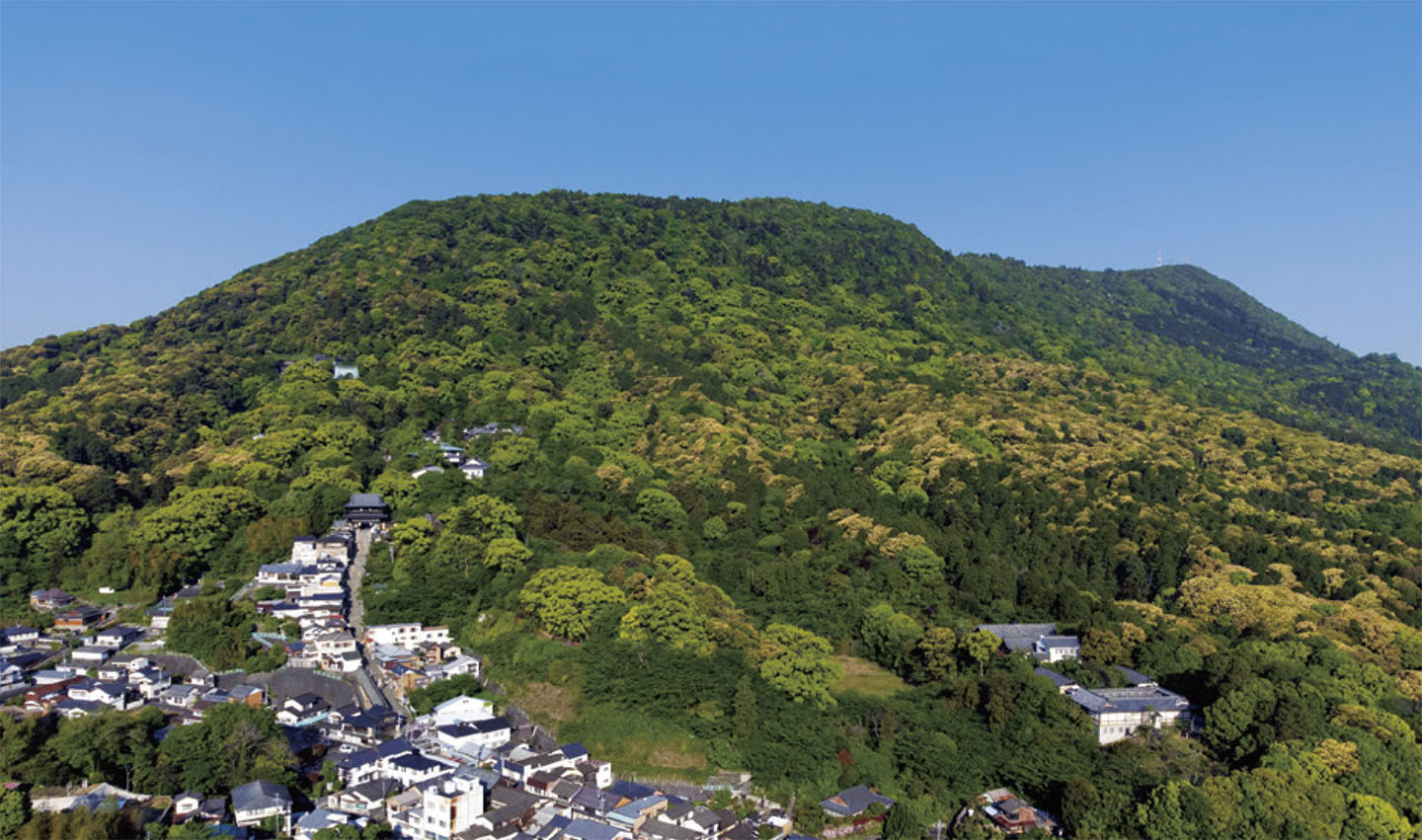
KOTOHIRA-Gu
KOTOHIRA-Gu
KOTOHIRA-Gu, or, more familiarly, Kompira-san, is a Shinto shrine dedicated to the guardian gods of the sea, fertility and medicine. Shinto (the Way of the Gods), is polytheistic, has its roots in ancient Japanese mythology, and strongly emphasizes love of nature, the importance of family, and physical cleanliness.
During the Edo period (1603~1867), when pilgrimage was the only form of travel permitted to common folk, people dreamed of "making a pilgrimage to KOTOHIRA-Gu". Still, today, visitors to Shikoku from all over Japan make a particular point of visiting Kompira-san.
A special feature of the shrine is its location - high up the eastern slope of Zozu-san (named for its profile resembling an elephant) and accessed by the purifying effort of climbing up 785 stone steps to the Gohon-Gu (main shrine) itself.
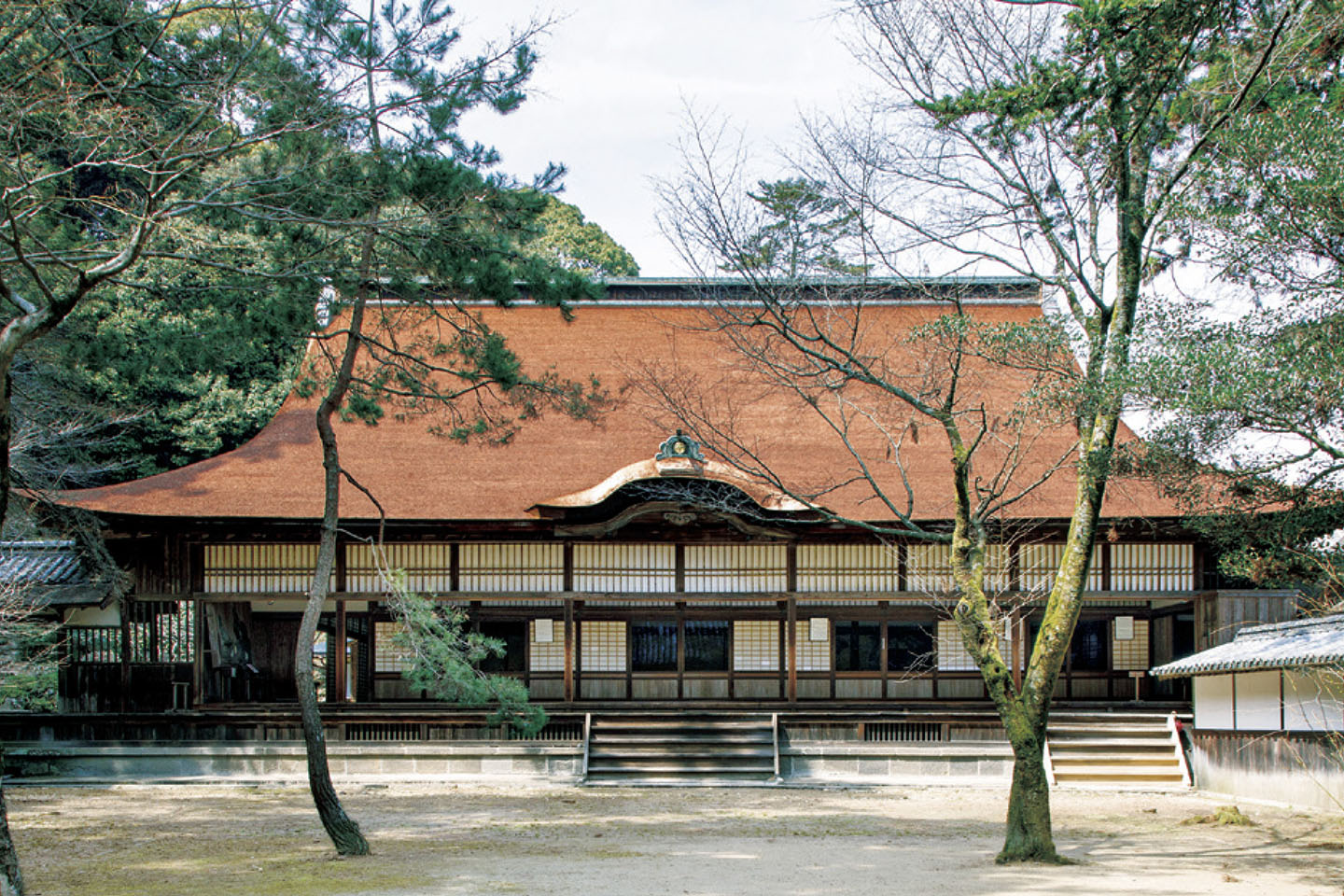
Omote-Shoin
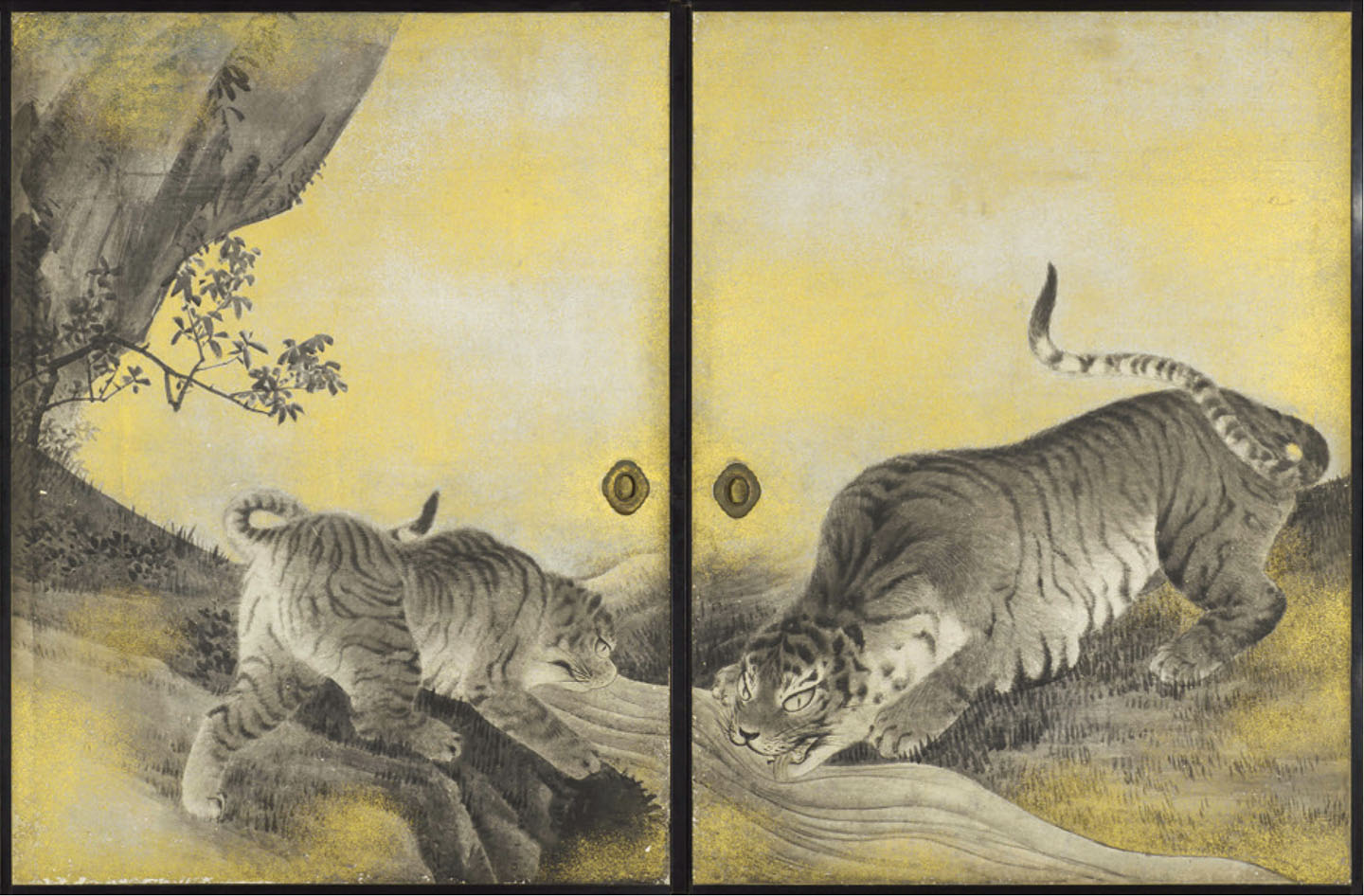
Mizunomi-no-tora
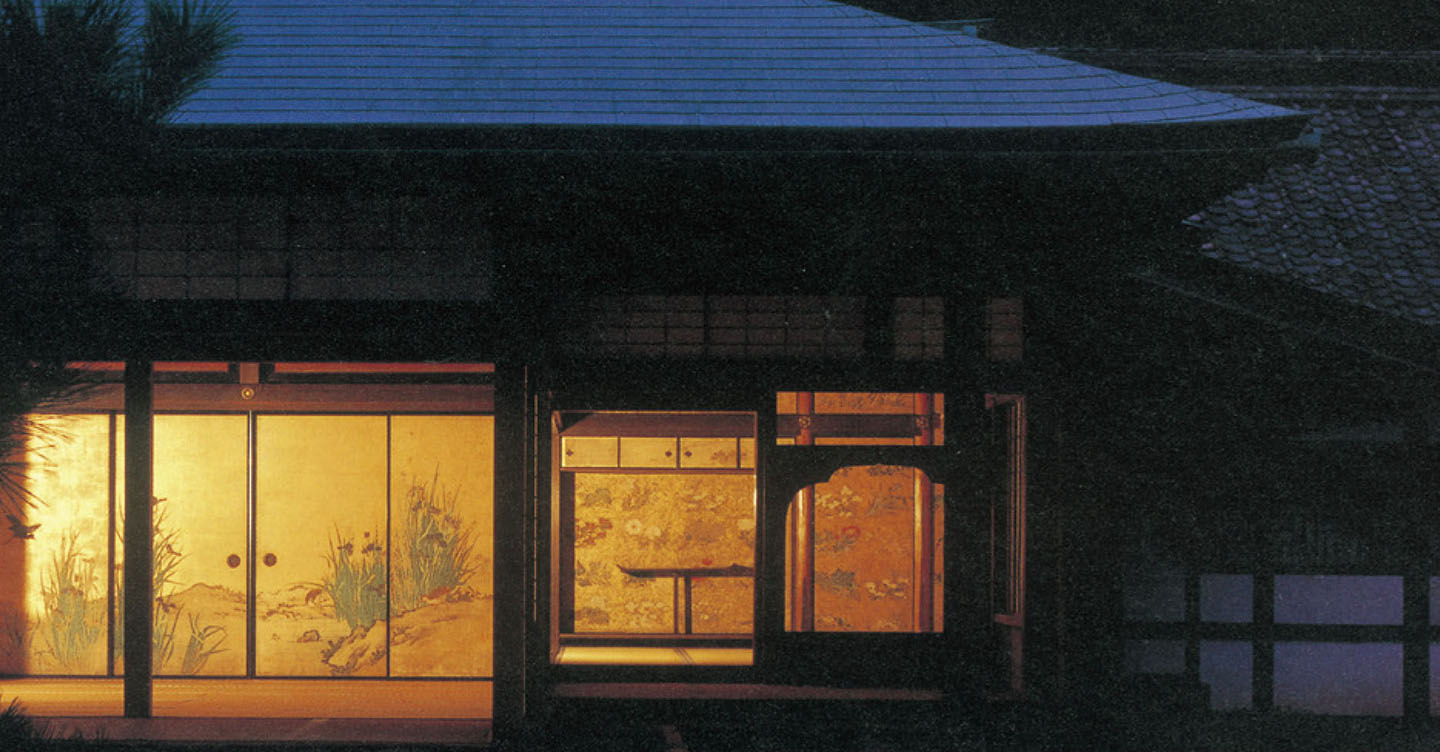
Oku-Shoin (open on special occasions)
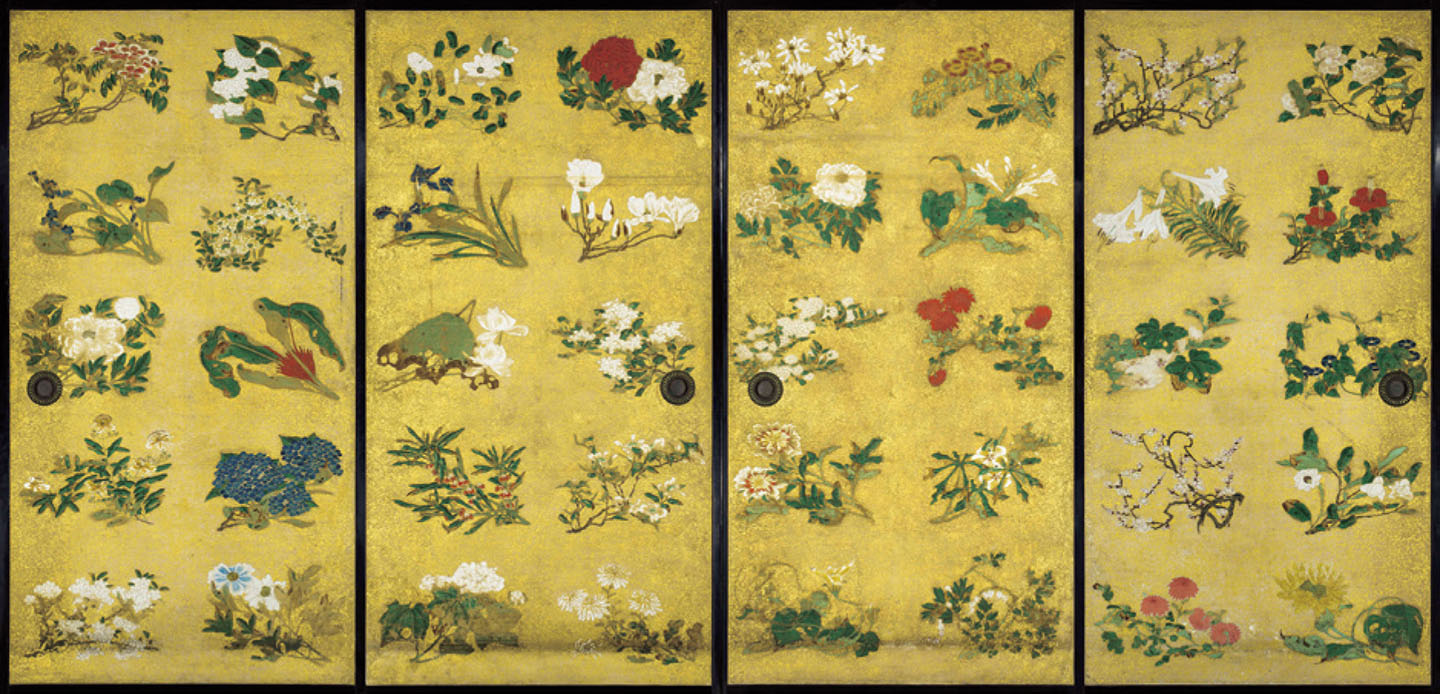
Hyakka-no-zu (open on special occasions)
Fortunately, there are many secondary shrines, fascinating examples of sculpture and architecture and other diversions on the way to provide an excuse for a break in the climb.
Halfway up you will come to what seems to be a small'parade ground'. Another 30 or so steps up again and you will face a T-junction. You can go left from the T-junction to continue up to the Gohon-Gu (main shrine). But if you go right, you will pass through a large gate and come to a beautiful old building housing galleries, the Omote-Shoin Art Museum, Oku-Shoin, (open on special occasions), and Shiro-Shoin (open on special occasions).
The beautiful garden and pond beside Omote-Shoin will entice you to sit and rest before continuing and houses art treasures designated as Important Cultural Properties. Omote-Shoin houses sliding paper doors painted by the renowned Edo-era artist, Maruyama Okyo (1733~1795). Oku-Shoin (open only on special occasions) has paintings by Itoh Jakuchu.
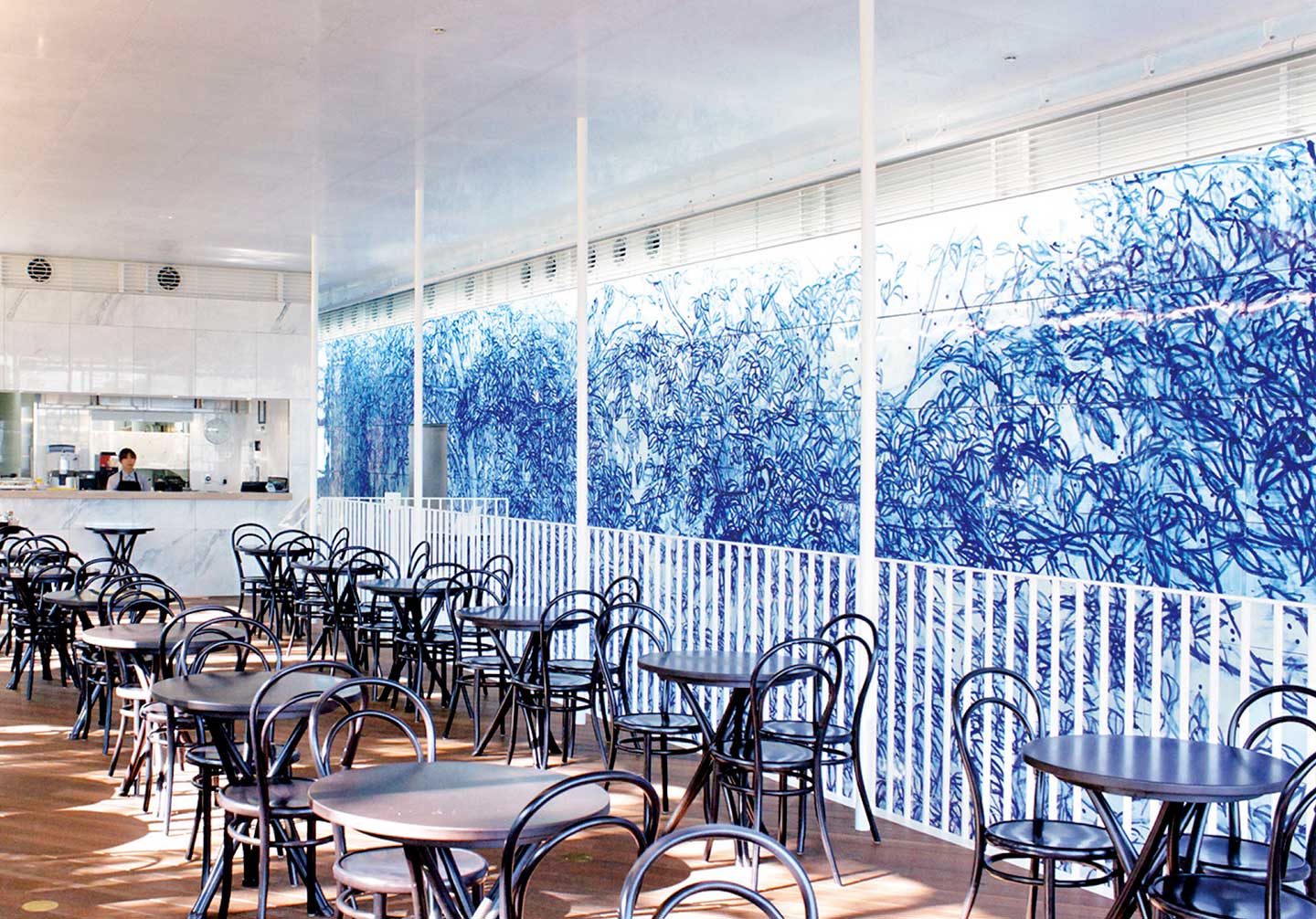
Kamitsubaki

Dishes in Kamitsubaki
Resuming the climb, there's a turn to the right 80 meters after the T-junction,. But note the entrance to the tea-room and restaurant, Kamitsubaki, on the left. You may want to rest here on your way back.
There was always a tea room here, dating from 1797, donated by Yamatoya Yasaburo. This building, unfortunately, blocked the forest view to the south, and so was shifted north to construct a cafe below ground level and a restaurant below that. The walls feature tiles of camelia and glazed in Arita, Kyushu in "Fukagawa Blue" by Fukagawa Seiji.
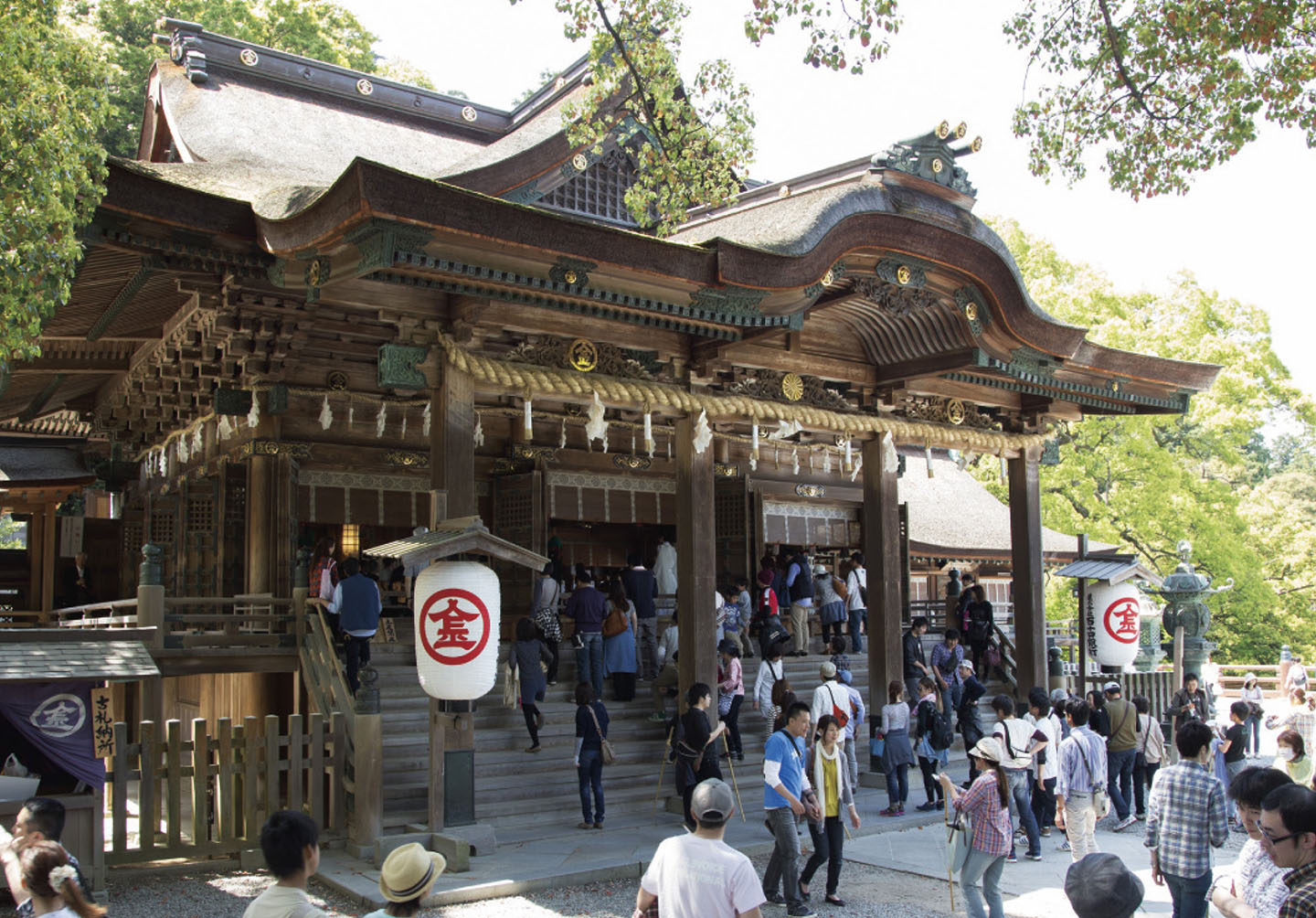
Gohon-Gu (main shrine)
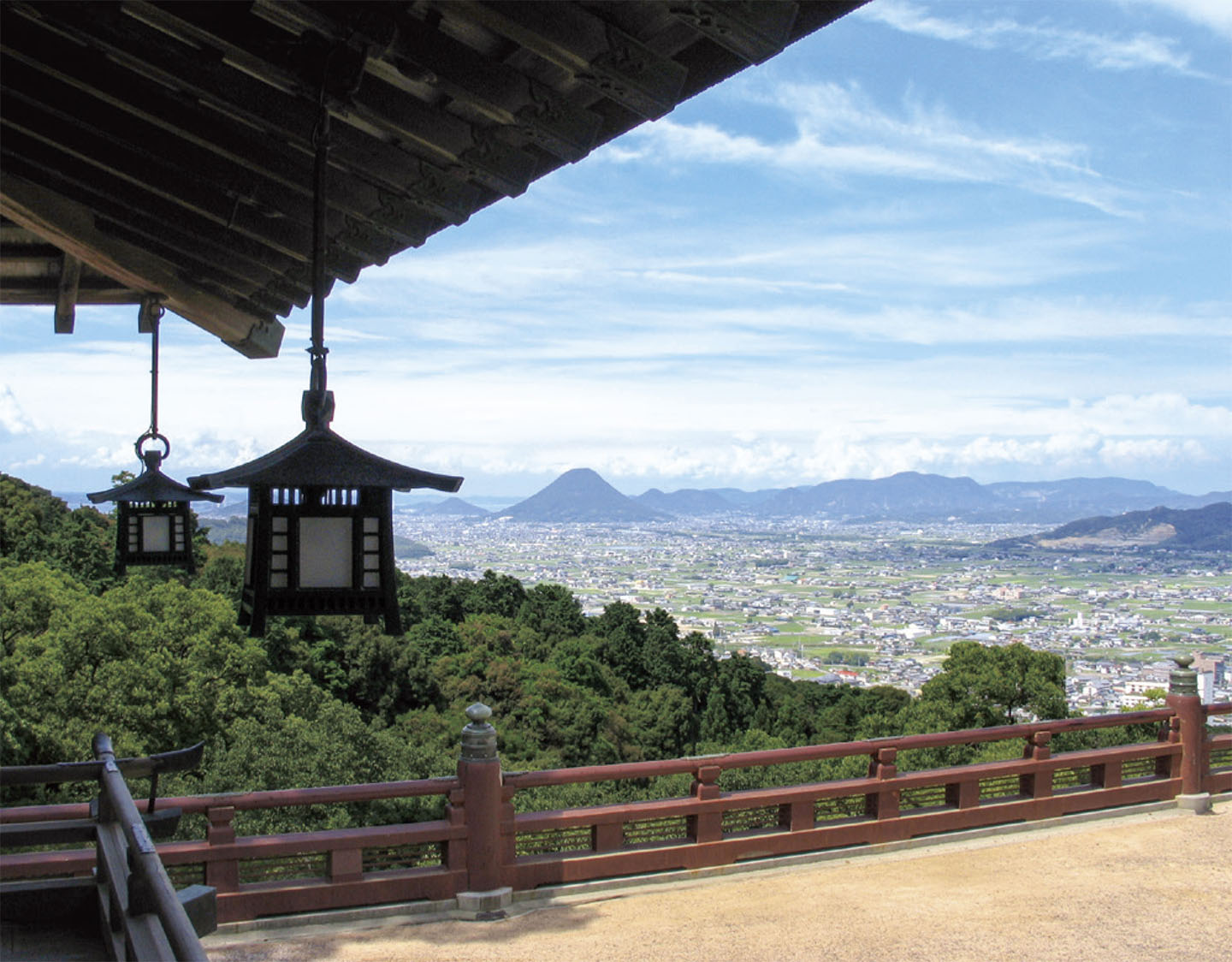
View from Gohon-Gu (main shrine)
Gohon-Gu (main shrine), is appropriately impressive. Every thirty-three years its fabulous layered bark roof is replaced. Note the gorgeous ceiling panels, hand-painted in kiji-makie URUSHI style by artists at Wajima on the Japan Sea.
Look to the north for views out over the Seto Inland Sea, and across the plain below to a mountain so symmetrical it is called Sanuki-Fuji. As you leave the Gohon-Gu (main shrine), before starting back down, you will pass stands offering shrine merchandise. New Year favorites include decorative archery arrows, and there are a variety of tablets to place in your home for safety of the homestead, for success in exams or other endeavors, or for safety at sea (making this shrine especially important to sailors and fishermen), among others.
Kompira-san is a very active shrine, preserving and promoting symbolic events and seasonal markers of Japanese culture.
By far the biggest is Hatsumode (first shrine visit of the New Year), when tens of thousands of visitors stream up to the Gohon-Gu (main shrine) to make an offering and pray for good health and fortune in the coming year. If the crowds are overwhelming and your knees begin to shake on the way down all those steps, branch off to the left at the 'parade-ground' into the quiet serenity of the extensive forested grounds and take the heavenly, smooth Ura-Sando (back route) down to the town.
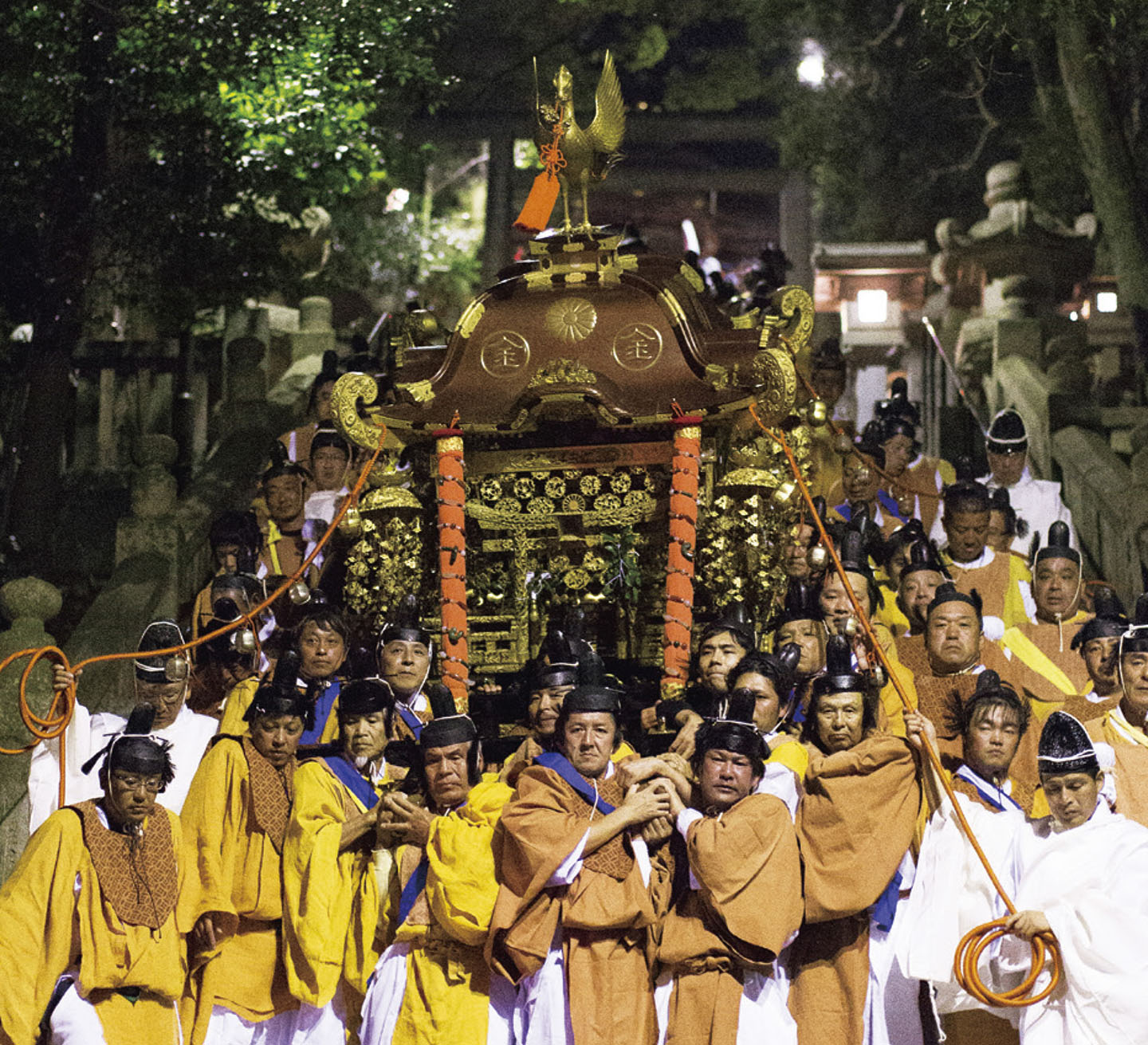
Reitaisai (The most solemn festival)
The most solemn festival is held October 9~11, when Kami-sama (God), in a portable shrine, accompanied by the Chief Priest in an elaborate palanquin and a retinue of other shrine priests and shrine maidens, guards and footman a procession down from the Gohon-Gu (main shrine) to take up temporary residence at the shrine. grounds across Saya-Bashi. Equally spectacular is the Kami-sama's midnight return, culminating in an unbelievable dash up the last and steepest flight of steps into the Gohon-Gu (main shrine).
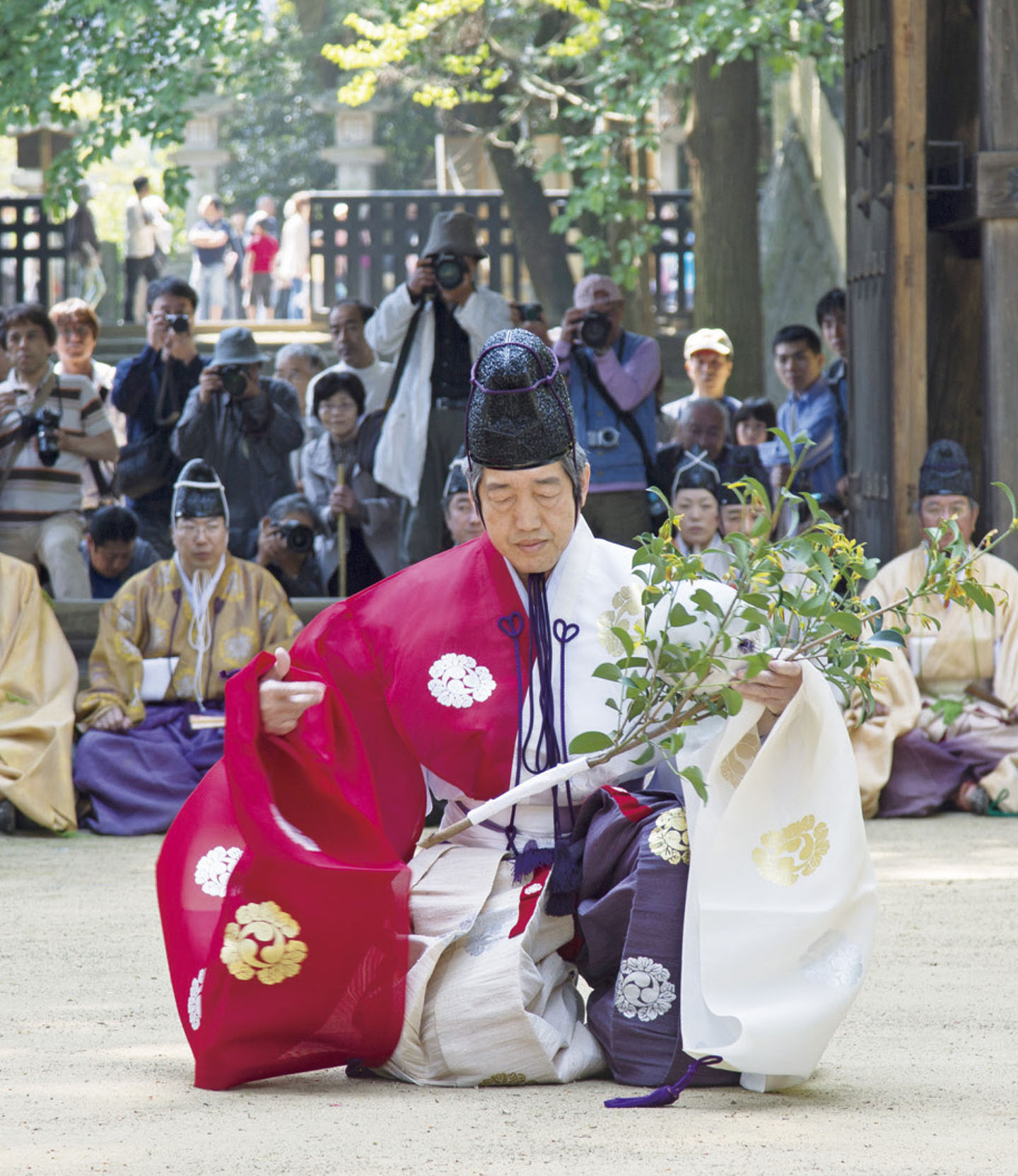
Kemari
Kemari, a colorful pageant of "soccer skills" by shrine priests in colorful classic costume, can only be seen in Kyoto, or here at Kompira-san on the ground in front of Omote-Shoin. The Kemari ground is defined by four forked trees, a pine, cherry, willow and maple. Gods are said to be sitting in the forks enjoying the display. Not to be missed, kemari is on May 5, July 7, and in late December.
And to celebrate the turn of the seasons, there are colorful events like the Cherry Blossom Festival (April 10) and the Maple Viewing Festival (November 10).
For those lucky enough to be able to visit often, Kompira-san offers both solemn and dazzling occasions throughout the year. We hope you enjoy your visit.
Mr. Kotooka Guuji (Chief Priest) continue to renovate and add to the site to make it a functioning shrine.



